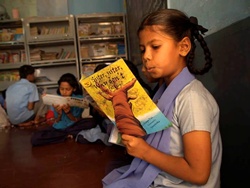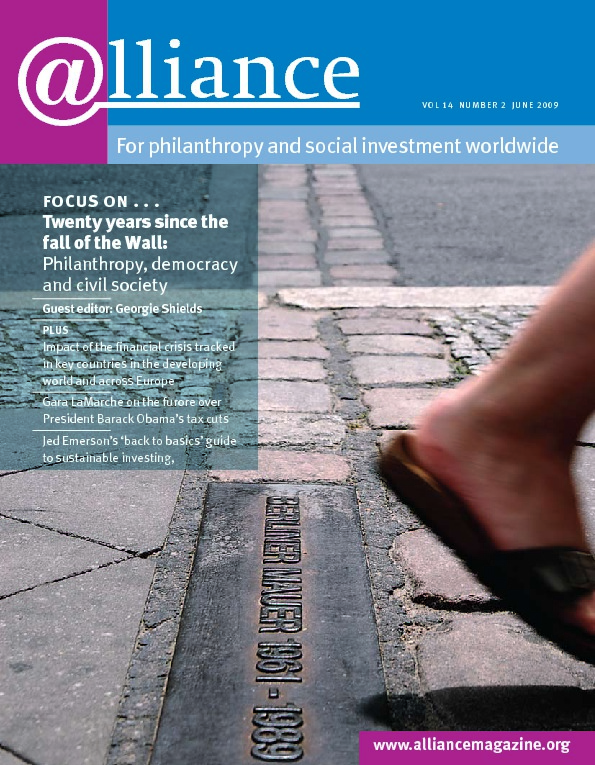Increasing school attendance rates is the main goal of most education programmes. However, it is not at all clear how best to get families to send their children to school. In countries where incomes are very low, children, even young ones, are needed to help support the family in some way – either working in the home or going out to work. So school sometimes takes a back seat to performing other duties.
Conditional cash transfer (CCT) programmes are an increasingly popular way to get more children to attend school, but is it the most effective way? One study in Colombia demonstrates that the design of the incentive programme has important implications for educational outcomes.
 Unfortunately, in most countries, people probably receive too little education – particularly in the developing world. On an individual level, the cost of going to school is a trade-off between the cost now and higher wages in the future. As an investment, education is financed by some combination of public resources, individual savings and individual loans. For families in poor parts of the world, public resources are often insufficient to cover the full cost of a child’s education. At the same time, educational loans are almost always unavailable, and saving money is extremely difficult. Conditional cash transfer programmes have emerged as major policy initiatives to increase education rates in developing countries.
Unfortunately, in most countries, people probably receive too little education – particularly in the developing world. On an individual level, the cost of going to school is a trade-off between the cost now and higher wages in the future. As an investment, education is financed by some combination of public resources, individual savings and individual loans. For families in poor parts of the world, public resources are often insufficient to cover the full cost of a child’s education. At the same time, educational loans are almost always unavailable, and saving money is extremely difficult. Conditional cash transfer programmes have emerged as major policy initiatives to increase education rates in developing countries.
Evaluations of these programmes suggest that they do increase participation in school, but they may not be as cost-effective as other interventions (such as the provision of de-worming medication). To make sure that public resources go towards the education programmes that work best to address barriers to education, we need a much better understanding of the financial challenges that families face, and the household decisions that determine whether and how much to educate children. New research in this area can shed light on these constraints.
A recent study in Bogota tested three variants of a cash transfer programme via a randomized control trial.[1] The first variant of the programme offered a traditional CCT approach. It gave participating families a fixed cash payment of approximately $15 per child twice a month for regular attendance (at least 80 per cent of the time). A second variant gave families two-thirds of the same transfer while putting the other one-third in a savings account to be made available in time to help pay for enrolment the next year. The final variant provided the savings account as well as a substantial extra payment for those who graduated and enrolled in a higher education institution. Compared to the first, the second and third variants test the need for appropriate savings mechanisms for poor households and ability to attend tertiary intuitions.
As expected, all of the incentives had a positive impact on school attendance, advancement to the next grade, graduation, and enrolment in higher education. But the design of the incentive also turned out to be very important. Changing the timing of the payments via the second savings variant increased enrolment in secondary and tertiary schools while not reducing attendance rates for students despite the lower monthly payments compared to the traditional incentive programme. The final variant providing a higher education incentive resulted in increased daily attendance and higher levels of enrolment in secondary school and beyond.
 So how can education officials use these results? At the very least, the study demonstrates that policymakers can adjust the features of a cash incentive programme to maximize impact without necessarily increasing the cost, an important consideration given their relatively high cost. The results also suggest that a more nuanced understanding of the reasons that families choose not to send their children to school can yield much more effective policies. Conditional cash transfers are an exciting policy innovation. The challenge now is to understand for each context when they are the most cost-effective policy option and what the appropriate structure of the programme would be.
So how can education officials use these results? At the very least, the study demonstrates that policymakers can adjust the features of a cash incentive programme to maximize impact without necessarily increasing the cost, an important consideration given their relatively high cost. The results also suggest that a more nuanced understanding of the reasons that families choose not to send their children to school can yield much more effective policies. Conditional cash transfers are an exciting policy innovation. The challenge now is to understand for each context when they are the most cost-effective policy option and what the appropriate structure of the programme would be.
1 Felipe Barrera-Osorio et al, Conditional Cash Transfers in Education: Design Features, Peer and Sibling Effects. Evidence from a Randomized Experiment in Colombia http://www.columbia.edu/~ll2240/Subsidios_CCT.pdf
Leigh Linden is Assistant Professor of Economics and International Affairs, Columbia University. Email leigh.linden@columbia.edu
Felipe Barrera-Osorio is Senior Education Economist, World Bank. Email fbarrera@worldbank.org
The opinions of this article do not necessarily represent the views of the World Bank.




Comments (0)